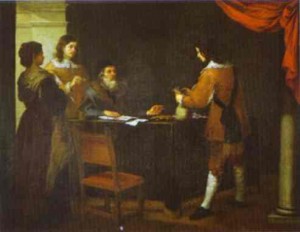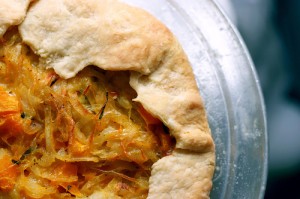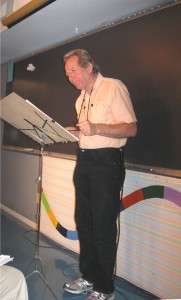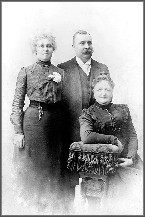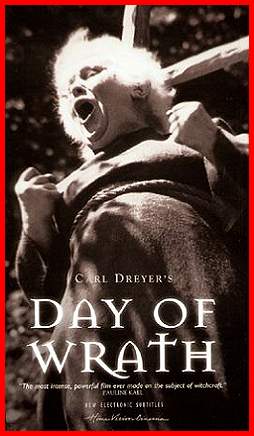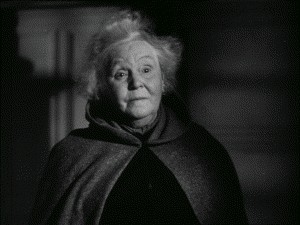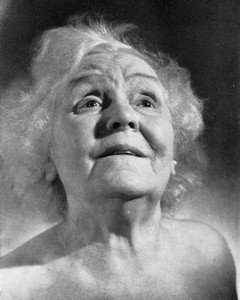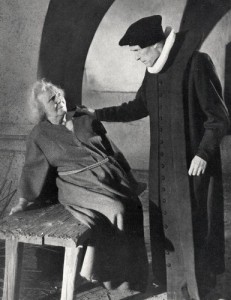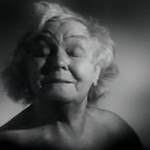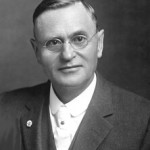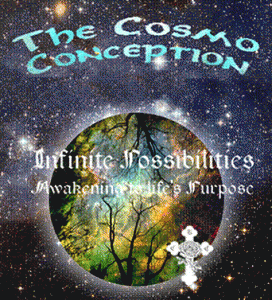Ger W’s biography,
MAX HEINDEL and THE ROSICRUCIAN FELLOWSHIP,
first published in Dutch in December 2003,
is now serialized in English on RFFriends.org.
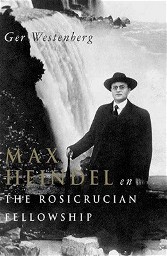 The reader will find a clear, documented chronicle of the activities which preceded and followed Max Heindel’s designation as messenger for the Brothers of the Rose Cross. Truly an extraordinary figure, Heindel founded The Rosicrucian Fellowship one hundred years ago, on August 8, 1909. To give an historical perspective, Westenberg begins with the earliest origins of the Rosicrucian Order, includes a synopsis of the masonic legend, and takes us to the early Rosicrucians of the 17th Century. The biography covers the span from Heindel’s boyhood until his final days at Mount Ecclesia and reviews the history of the Fellowship in the years that followed the passing of Augusta Heindel. By the generosity of the author, RFFriends plans to run future installments biweekly over a period of one year. You may access these from the Blogs page by clicking on the Books tab at the top and then clicking on “installment 1 bio.” It is uncertain when the manuscript will be published in book form in English, but interested persons may contact us at: friend@rffriends.org.
The reader will find a clear, documented chronicle of the activities which preceded and followed Max Heindel’s designation as messenger for the Brothers of the Rose Cross. Truly an extraordinary figure, Heindel founded The Rosicrucian Fellowship one hundred years ago, on August 8, 1909. To give an historical perspective, Westenberg begins with the earliest origins of the Rosicrucian Order, includes a synopsis of the masonic legend, and takes us to the early Rosicrucians of the 17th Century. The biography covers the span from Heindel’s boyhood until his final days at Mount Ecclesia and reviews the history of the Fellowship in the years that followed the passing of Augusta Heindel. By the generosity of the author, RFFriends plans to run future installments biweekly over a period of one year. You may access these from the Blogs page by clicking on the Books tab at the top and then clicking on “installment 1 bio.” It is uncertain when the manuscript will be published in book form in English, but interested persons may contact us at: friend@rffriends.org.
The author good-heartedly submitted to an interview and wrote candidly about his life and his experiences and encounters through 50 years of writing this monumental work. It is our opinion that you will enjoy Ger’s story as you enjoy his book.
ER • What gave you the greatest satisfaction in creating this book? – And why?
GW • We, that is my parents, my brother and two sisters moved to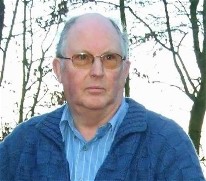 Amsterdam when I was 17. We had lived in the country, but my father had his wholesale business in porcelain and pottery in Amsterdam, and in 1950 this is where one needed to live to get a secondary education.
Amsterdam when I was 17. We had lived in the country, but my father had his wholesale business in porcelain and pottery in Amsterdam, and in 1950 this is where one needed to live to get a secondary education.
The intention was that I, as eldest son, would enter into the business of my father. One day in early September, when I was 20, I came home and there lay the newspaper open at the table. I did not and still do not like reading newspapers, but I was attracted to it and saw a small Fellowship emblem and the announcement that the Rosicrucian Fellowship would start an astrology course on September 7, 1953. I did not know anything about astrology.
But when we lived in the country, we had a very large house and garden, and during the summer my mother’s sister, who was a widow, came to us and worked a few months with my mother to clean the house. When I was 17, this aunt asked me if I would read cards for her. I answered that I did not know how to do that, but she had a magazine and in it the cards were portrayed and what they meant.
So I did it for her, my mother, my father and the rest of the family. What I remembered was that every one had a death notice, except my mother. This concerned me, but I did not tell it to the other members. I was afraid that my mother would die. After several weeks my mother was called by a nephew who asked her if she would come and keep vigil in a hospital at the sickbed of her brother in another city. After a few days she came home and told us that her brother had died. I was relieved that it was not she who died.
When I saw that classified ad, I hoped that astrology was more definite. It appeared that I had a feeling for astrology, and after half a year I asked the leaders what the Rosicrucian Fellowship meant, and they said they would start a new course on the Cosmo in September. So, of course, I joined them and was really excited; this was what I always wanted to know. I became a member on April 18, 1956, in Amsterdam and in September 1956 in Oceanside. (I became a probationer on February 1, 1959)
ER • Looking back to when you first started the biography, how have changes affected your work on the project?
GW • I was the youngest member there and often visited elderly members who had to go to a smaller house or a home for elderly people, and they often asked me if I wanted to have their lessons and letters and sometimes some books. I always accepted what they offered, and so my archive grew.
There were often persons who told the most absurd stories about Max Heindel and the Fellowship, so I decided to investigate for myself.
There were two individuals who were very important to me. Mr. Jaap Kwikkel, who became a disciple, was very good in astrology and lived in Zaandam and Mr. Frits Kreiken, also a disciple who was very good in the teachings.
It was on April 29 1961 that I married the daughter of the organist of the famous and oldest protestant church in Amsterdam. She expected a baby in early 1963, and I tried to find out astrologically when it would be born. We could win a baby buggy if we guessed the date well. Although we were very poor at that time, I would not do that, but the date I had calculated was exactly right. This I did for my daughter also; it was right too, but because of my studies, I lacked the time to do it fo rmy youngest daughter.
Working in a business was not what I wanted, so I started to study to become a social worker at the Sociale Academie in Amsterdam. When I was in the second of the four years, I had to secure an internship, and that was not easy to find, especially since I was just married and we had two young children. But I got a job at last in Zaandam, and also a house. This really was a prize from a lottery, as there was a great shortage of houses after World War II. It was difficult to rent a house (1961)
ER • In these 50 years of research, what were your biggest surprises from the information you gained – from the whole experience?
GW • There were some members who said to me that Heindel certainly would not have liked it that someone wrote his biography. This sounded strange to me, as he gave much information in his books, but I filed it in the back of my mind.
To search in America is rather difficult. I wanted to find a copy of the will and testament of Max Heindel and that of Augusta Foss, but you needed to know who had been their lawyer and where he lived. In Holland we have a central register, but this was not so in California.
Nevertheless, friends in California helped me, and I found these testaments. In that of Mrs. Heindel I found the addresses of the 4 children of Max Heindel, but these were several decades old.
It was in 1968, the day before Christmas when I came home and talked with my wife in the kitchen. The postman had delivered a thick envelope from America, from the eldest daughter of Max Heindel, Wilhelmina. She had received my letter and the return took one year. It included 3 pictures: Max Heindel’s mother and his brother and half-sister (34), Heindel and his first wife and Wilhelmina (37), and the four children when they went to America (39). They are portrayed in chapter two of the biography. So, for me this was encouragement to go further with the biography. These pictures and the contact were a great surprise to me.
I could not get information from Copenhagen, Denmark; only that Heindel had lived in that city. Then I got an idea. As you know, in Message of the Stars you can find Heindel’s horoscope (No 3), but it does not say where he was born. Expecting that Heindel could certainly calculate his own horoscope, I did it myself with an ephemeris from that time (Raphael) and saw that the Moon did not fit for Copenhagen. So I started to move it, and it fit for Aarhus, Denmark, so I wrote a letter in German to the central archive of that area. After a year I still had no answer and Mr. Kreiken suggested that I write to a friend of their family, Adda Christensen, in Copenhagen, and ask her to call the archive. It seemed that Mr. Rickelt had collected a lot of information, and he could read German, but he could not write it, and so he asked Ms Christensen if she would translate a letter for him.
It was really a revelation to me, and he gave me an original red stone print (lithograph) from 1868 of Aarhus, with the bakery on it from Backer Grasshoff. He also had one for himself. In the meantime I had translated the biography into English in 1971 and duplicated it on a so-called stencil or mimeograph machine from my employer, the Protestant Church in Zaandam. That Church gave me consent to follow the advanced study for social worker. This meant that they would pay for part of the time that I spent practice teaching elsewhere during the second year, and we would have a salary. They knew that this would be the last year I would work in Zaandam and they saw it as a token of appreciation, and that it certainly was.
In the meantime I sent the biography to headquarters with all of the original pictures and the original litho and kept duplicates for myself. The reason was that the board at that time said they had the intention to publish it. This never happened, and the pictures and litho have been long gone.
We moved to Dieren, in the eastern part of the country with its beautiful national park in 1972. I became social work adviser and worked in the whole province with our bureau in Arnhem (16 January 1973). We soon got a house to rent.
It was on April 5, 1974, that my wife and I went to California. We could stay some time in LA at the wife of the widow, Schwenk, and were the guests of their son, Norman. We saw so many interesting things in those three weeks. I also stayed 3 days at Headquarters. What a disappointment that was. I was all alone, but a Dutch lady, Mrs. Young, and her English husband lived there. She had helped me with the translation of several parts of the biography into English. She was domineering, and the other board members did not like that, so they called her a communist, and so I, as their visitor, was a communist too.
No one talked to me, and the library was, alas, packed in boxes because of planned painting work. I took pictures and mostly sat on the bench that overlooked part of the valley and had a view of the temple. There I had the company of the hummingbirds, that I had never seen alive before. It was as if I could grasp them. I also once saw a rattle snake on the temple road.
On the last day Irene Murray came to me, and invited me to visit the temple and to take some pictures from the inside; the chapel could be visited freely. And she showed me the healing department and the inside of some other buildings.
My wife and I divorced on August 3, 1975. I lived then for four years in a summer cottage in the woods where, on Saturday, every other weekend, my 3 children visited me and had a very nice little vacation. It was rather quiet there, but my children and I liked that.
You will not believe it, but February 19, 1984 was a terrific day for me. A friend of mine, Michel Kwikkel, the son of Jaap Kwikkel, who was a computer man, a programmer, had programmed a small calculating machine so that I could very accurately calculate horoscopes. On that Day I had my horoscope rectified.
It was in 1984 that I heard that the Barkhurst family was still alive, and I contacted them with questions, of course. This grew into a friendship and they said to me that their etheric sight had given them the conviction that they would do well to send me their Disciple file. They died (Mrs) in March 1987 and (Mr) in December 1986, but they had made it possible for me to write the reconstructed disciple exercise and to report how Heindel worked in the early days.
I did, however, not know at what point I was; therefore I had made a horary figure. You will learn from the biography that later the Elder Brother did the exercise with me, and ‘point one’ was the same which I had calculated. I have the Sun in Aries, and maybe that is the reason point one is in my case the head; Heindel said he could not find an astrological rule.
It was in 1986 that we learned that our Bureau at work would be discontinued. First the elder people were let go. My time came in 1986. It resulted in my having a salary, but being unemployed. This lasted about a year during which I translated Questions and Answers II into Dutch. Seven of us together in The Hague established Stichting Zeven (Cooperation Seven), donated some money, and published the book, 1000 copies in the fall of 1990.
ER • The book has been published now in Dutch and in Spanish. What other languages are in the works?
GW • I got a new job and worked for four years, during which I translated more books and finished the biography in Dutch. Mr. Joost R, the owner of the Ritman Library of Amsterdam, the largest Rosicrucian Library in the world, asked me to visit him. After an hour’s talk about the biography, he said that the Biography had to be published and that he (the Library) has a fund for this and would pay the costs. The biography was published in December 2003. (One thousand copies)
In 1998 the Rose Cross Press (Lectorium Rosicrucianum) asked me if we (the Fellowship in Holland) would agree to publish the Cosmo in Dutch again. It was sold out, and they sell the Heindel books to their members and people who come to their meetings. It would be printed under the name of the Fellowship, I would correct the book in modern Dutch, and they would pay for the publication. This happened in the year 2000.
This meant that after my retirement in 1998, I spent my time (re) translating the books by Max Heindel of which several are now ready. The waiting is for a promised donation to have them published.
Folker Schlender helped me translate the biography into German and they have been publishing it in instalments on their website in Germany since the summer of 2008.
Elizabeth R translated it into English, and began publishing it on RFFriends in November 2009.
Jorge y from Colombia translated the book into Spanish, and it was published in July 2009.
Antonio F from Portugal finished the translation into Portuguese that will be printed in mid November 2009.
Paolo P from Pisa, Italy, is translating the book into Italian of which I have no details.
ER • What do you expect for the future of The Rosicrucian Fellowship as an organization? – For the philosophy? – For the work of the Fellowship?
GW • The future of the Fellowship is safeguarded by the many active members throughout the world who publish information and books on their websites.
The future of Headquarters – it has lived its longest time, I think.
There is interest by many people, and the availability of books and publications on the internet will help to prepare people for the coming Christian era, the Aquarian Age. The teachings of Heindel are the new form of Christianity.
ER • We have seen interest and anticipation for the book from English-speaking members, and people seem eager to have a published copy. What has been the reaction to the book among the Dutch and Spanish-speaking members?
GW • I suppose that we will hear more when people have read the book on the internet and later when they have a printed copy. The difficulty is that now we reach those who are consciously interested, but books that become available in bookshops will also reach other persons. I do not know how many books have been sold in Holland, several hundred, at least. Jorge Rey had 100 copies printed in Spanish, but I do not know if he has ordered a second printing.
ER • What other things are you working on?
GW • I have two objectives in mind. One is to write a book about astrological physiognomy. I have 4000 horoscopes and pictures of mostly western people. I will try to study drawing, so that I can make composite drawings.
The second is to write a book about horary astrology with the lesser aspects such as Kepler gave us, and by using the Campanus system, which seems to be the correct house system
ER• What kind of advice would you like to give those who are devoted to the Rosicrucian philosophy? To those who are members of the Fellowship?
GW • This is a question that is difficult to answer. It depends on what individuals want, and what they are willing to invest. Heindel said that he regretted that although many persons were happy with his teachings, few wanted to live according to them. But suppose that you want to live the life, how far do you want to go? Your inner urge determines the kind of trials you get.
Heindel says in Letters to Students that as long as we live the usual life things go smoothly, but as soon as we start to strive the difficulties arise. Then one must persist and listen to his own inner law. Only when we have built the law within, Heindel says, can we become initiates.
One of the most important things is to have patience and to stand up again after you have fallen. I seldom think about when it is time at last to become an initiate. As long as we do our best we pay our debts and our guardian gets smaller and will be easier to pass, perhaps.
ER • You have the distinction of being able to look back on many years of experience with the “Western Wisdom” philosophy. How did you discover these teachings, and what have they meant to you personally over these years?
GW • I already responded about how I came in contact with the teachings in the first question. For me it was immediately clear that these were the teachings I was unconsciously seeking. I have read books about other teachings, but always with the goal to know what they learn. I have never had the urge to try something else. The Freemasons asked me three times to become a member, also the Lectorium, but that is absolutely out of the question. At the moment, there is nothing higher than the Rosicrucian Teachings as Heindel put them into words. I highly respect Heindel for what he gave to the world during the final ten years of his life.
I am therefore glad that I was able to write his biography. Steiner failed and there are more than 5 biographies of him. Heindel succeeded and certainly needs at least one biography. I, therefore, was wild with joy when very recently I received four childhood pictures of Max Heindel that Madeline B discovered in a desk drawer.
Tags: biography, Ger Westenberg, Max Heindel and The Rosicrucian Fellowship

